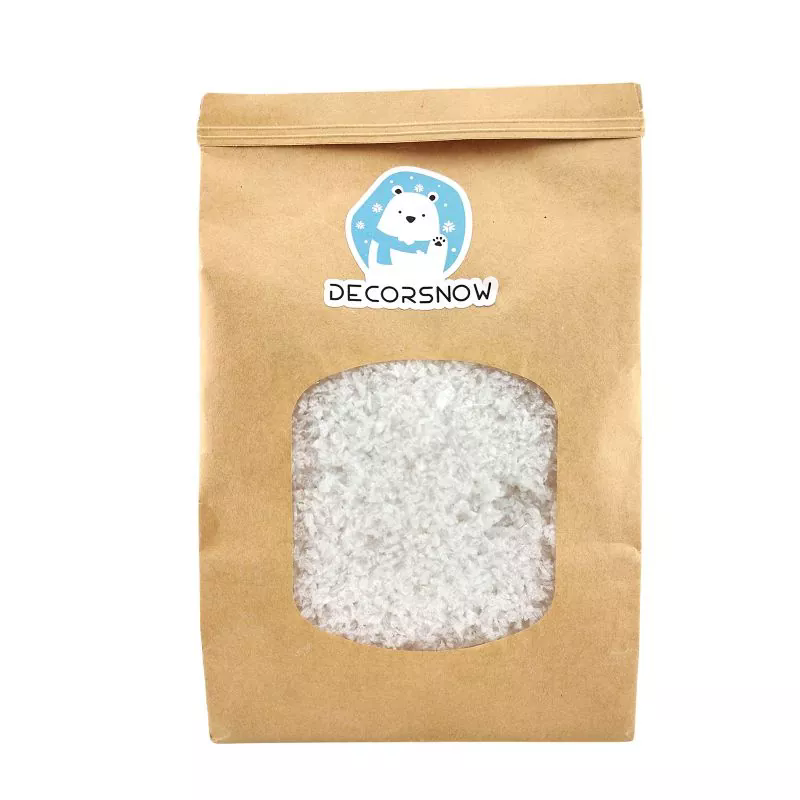How to Choose the Right Artificial Snow
2024-06-06
Artificial snow is a synthetic material designed to mimic the appearance and texture of natural snow. It is used in a variety of applications, from entertainment and events to scientific research and industrial uses. Here's a comprehensive overview of artificial snow:
Types of Artificial Snow
1. Snow Machines:
- Snow Guns: These devices produce artificial snow by combining water and compressed air. Snow guns are commonly used in ski resorts to extend the ski season and ensure consistent snow coverage.
- Fan Guns: Similar to snow guns, but they use a fan to blow the water droplets into the air, where they freeze and fall as snow. Fan guns are also widely used in winter sports venues.
2. Chemical Snow:
- Sodium Polyacrylate: This superabsorbent polymer can absorb many times its weight in water, creating a slushy, snow-like substance. It is safe, non-toxic, and often used in indoor displays and holiday decorations.
- Cellulose-Based Snow: Made from plant fibers, this type of artificial snow is biodegradable and eco-friendly. It is used for decorative purposes and in film and television production.
3. Paper Snow:
- Shredded Paper: Finely shredded white paper can be used to create a snow-like effect. It is lightweight, non-toxic, and easy to clean up, making it suitable for indoor events and displays.
4. Plastic Snow:
- Polystyrene Beads: Tiny white plastic beads are sometimes used to simulate snow. While effective, they are not environmentally friendly and can be difficult to clean up if dispersed widely.
Applications of Artificial Snow
1. Entertainment and Events:
- Holiday Decorations: Artificial snow is widely used in holiday displays, window decorations, and Christmas trees to create a festive atmosphere.
- Film and Television: Used on sets to create winter scenes, artificial snow ensures consistent and controlled snowy conditions regardless of the actual weather.
- Themed Parties and Events: Provides a wintery ambiance for themed parties, weddings, and corporate events.
2. Winter Sports:
- Ski Resorts: Snow machines are essential for creating and maintaining ski slopes, especially in regions with inconsistent snowfall.
- Snow Parks: Used to create snowboarding and skiing areas for recreational use in areas without natural snow.
3. Scientific Research:
- Climate Studies: Artificial snow can be used in scientific experiments and simulations to study snow behavior and properties under controlled conditions.
- Hydrology and Agriculture: Researchers use artificial snow to study its effects on soil moisture, water runoff, and crop growth.
4. Industrial Uses:
- Product Testing: Companies use artificial snow to test products designed for snowy conditions, such as tires, clothing, and equipment.
Advantages and Disadvantages
Advantages:
- Consistency: Provides a reliable and controlled snowy environment regardless of actual weather conditions.
- Versatility: Can be used indoors and outdoors for a variety of purposes.
- Immediate Availability: Can be produced on-demand, ensuring availability when natural snow is not.
Disadvantages:
- Environmental Impact: Some types of artificial snow, particularly those made from plastic or non-biodegradable materials, can harm the environment.
- Cost: Producing artificial snow, especially using snow machines, can be expensive due to the energy and water required.
- Maintenance: Artificial snow may require regular maintenance and cleanup, particularly in indoor settings.
How to Choose the Right Artificial Snow
- Purpose: Determine the primary use of the artificial snow (e.g., decoration, sports, research) to choose the most suitable type.
- Environment: Consider whether the snow will be used indoors or outdoors and whether it needs to be biodegradable or easy to clean up.
- Safety: Ensure the chosen artificial snow is non-toxic and safe, especially if it will be used around children or pets.
- Budget: Factor in the cost of production, maintenance, and potential environmental impact when choosing artificial snow.
Conclusion
Artificial snow is a versatile and useful product that can create wintery conditions for various applications, from enhancing holiday displays to supporting winter sports. By understanding the different types and their uses, you can select the most appropriate artificial snow for your needs while considering environmental and safety factors.



